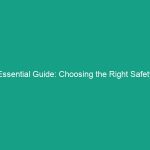Good morning team!
Today, we’re going to talk about something that affects us all: driving in fog. This topic is crucial, especially during this time of year when foggy conditions are more prevalent. Understanding how to drive safely in fog can mean the difference between life and death, not just for you but for everyone on the road. Let’s dive into some essential tips for driving in fog, master reduced visibility, and ensure Safety on our journeys.
Understanding Essential Tips for Driving in Fog
Driving in fog is a common yet hazardous situation that can significantly impact visibility and reaction times. Fog can reduce visibility to less than a quarter of a mile, making it difficult to see other vehicles, road signs, and pedestrians. Understanding the essential tips for driving in fog is vital for maintaining Safety on the roadways. It’s not just about having good vision; it’s about being aware of the conditions and adapting your driving habits accordingly.
Many people believe that using high beams in fog helps improve visibility. However, this is a misconception. In reality, high beams can reflect off the fog, creating a “white wall” effect that can further impair your vision. Instead, using low beams or fog lights is the recommended approach.
Key Hazards, Risks, and Safety Considerations
Driving in fog presents several dangers that require our attention. The most significant risks include:
- Reduced Visibility: Fog can limit visibility to just a few feet in front of your vehicle, making it challenging to spot obstacles or other vehicles.
- Increased Stopping Distance: Reduced visibility often leads to longer stopping distances, meaning drivers may not have enough time to react to sudden changes in traffic.
- Disorientation: Fog can create a sense of disorientation, making it difficult to determine your speed or the distance to other vehicles.
- Higher Accident Rates: Statistics show that fog is a contributing factor in many accidents, especially multi-vehicle pile-ups.
Ignoring safety protocols while driving in fog can lead to severe consequences, including accidents, injuries, and even fatalities. Therefore, it’s essential to recognize these Hazards and take proactive measures to mitigate risks.
Best Practices, Procedures, & Actionable Advice
Now, let’s go over some Best Practices and Procedures for driving in fog:
1. Slow Down
One of the most important tips for driving in fog is to reduce your speed. Slowing down will give you more time to react to potential hazards. Remember, it’s better to arrive late than not at all.
2. Use Proper Headlights
Always use your low beams or fog lights when driving in fog. High beams should be avoided as they can reflect off the fog and cause glare.
3. Increase Following Distance
Maintain a safe following distance behind the vehicle in front of you. This extra space will give you ample time to react if the vehicle suddenly stops or slows down.
4. Stay in Your Lane
Fog can make it easy to drift out of your lane. Use road markings as a guide and avoid sudden lane changes unless absolutely necessary.
5. Use Windshield Wipers and Defrosters
Ensure your windshield wipers are functioning correctly, and use defrosters to keep your windows clear. This will help maintain visibility inside your vehicle.
6. Listen for Traffic
In thick fog, you may not see other vehicles, but you can often hear them. Keep your windows cracked slightly to listen for approaching cars or sirens.
7. Avoid Distractions
Stay focused on the road. Avoid using your phone or any other distractions while driving in foggy conditions.
Real-Life Example
Consider a scenario where a driver was traveling at the normal speed limit in dense fog. They were unable to see a stop sign until it was too late, resulting in a collision. This incident reinforces the importance of adjusting speed and being proactive in foggy conditions.
Regulations, Standards, and Compliance
Familiarity with relevant safety Regulations is crucial for compliance and safety. The Occupational Safety and Health Administration (OSHA) provides guidelines for Safe Driving Practices, including recommendations for operating vehicles in adverse weather conditions. Adhering to these regulations not only ensures compliance but also protects employees from potential hazards associated with fog.
Remember, following company-specific safety Standards can help mitigate risks and create a safer work Environment for everyone.
Employee Engagement & Discussion
Let’s open the floor for discussion. What safety challenges have you encountered related to driving in fog? Have you experienced an incident that could have been avoided with better practices? Your insights and experiences can help us all learn and improve our Safety Measures.
Conclusion & Key Takeaways
In conclusion, driving in fog requires heightened awareness and adherence to safety protocols. Remember to slow down, use appropriate headlights, increase your following distance, and avoid distractions while driving in foggy conditions. By applying these essential tips for driving in fog, you can significantly reduce the risks associated with reduced visibility.
Thank you for your attention today. Let’s all commit to prioritizing safety on the road and supporting each other in maintaining a safe working environment!


